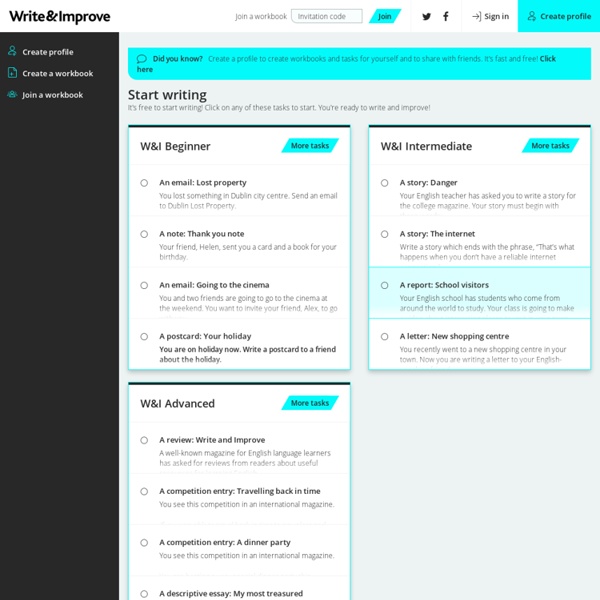English Phrasal Verbs
What is a Phrasal Verb? Phrasal verbs (also called multi-word verbs) are idiomatic expressions, combining verbs and prepositions to make new verbs whose meaning is often not obvious from the dictionary definitions of the individual words. They are widely used in both written and spoken English, and new ones are formed all the time as they are a flexible way of creating new terms. A phrasal verb consists of a verb and a preposition or adverb that modifies or changes the meaning; 'give up' is a phrasal verb that means 'stop doing' something, which is very different from 'give'. Phrasal verbs can be divided into groups: Intransitive verbs These don't take an object Example: They had an argument, but they've made up now. Inseparable verbs The object must come after the particle. Example: They are looking after their grandchildren. Separable verbs With some separable verbs, the object must come between the verb and the particle: The quality of their work sets them apart from their rivals.
25 Reading Strategies That Work In Every Content Area
25 Reading Strategies That Work In Every Content Area Reading is reading. By understanding that letters make sounds, we can blend those sounds together to make whole sounds that symbolize meaning we can all exchange with one another. Without getting too Platonic about it all, reading doesn’t change simply because you’re reading a text from another content area. Science content can often by full of jargon, research citations, and odd text features. Social Studies content can be an interesting mix of itemized information, and traditional paragraphs/imagery. Literature? This all makes reading strategies somewhat content area specific. But if you’d like to start with a basic set of strategies, you could do worse than the elegant graphic above from wiki-teacher.com. Looking for related curricula ideas? 1. 2. 3. 4. 5. 6. 7. 8. 9. 10. 11. 12. To the above list, we’d add: 13. 14. 15. 16. 17. 18. 19. 20. 21. 22. 23. 24. 25. See Also: 25 Self-Guided Reading Responses For Fiction And Non-Fiction
The Back of 2020: A New Year's Ramble | The Clark and Miller English Podcast
A New Year’s ramble and 10 natural English expressions. This episode is in two parts: In part one, I talk naturally and without a script. This is your chance to listen to ungraded, natural English (and my weird innermost thoughts). In part two, I talk you through 10 of the most interesting natural English phrases, idioms, pronunciation strategies and communication strategies I used in part one. In this episode, you will learn: strategies to correct yourself;how to use auxiliaries to sound natural;new English phrases like “see the back of” and “every man and his dog”;how to be less specific and more general;strategies to use when you’re not sure of your facts;how to understand some tricky English pronunciation. All of this to bring you one step closer to understanding the messy world of “real world” English. Listen on iTunes / Spotify / Acast / Stitcher / SoundCloud
US Presidential Election
Background 2016 presidential candidates Basic details of each candidate’s backgroundWhere the Candidates Stand on 2016’s Biggest IssuesWhat happens when … and how The important dates, Feb-Nov, listed and explained2016 Primary Results and Calendar Quickview of the results so far by NYTimes Warm-up What do kids want in a president? Vocabulary Democracy and Elections 15 words explained with examples and an exercisePresidential Elections Vocabulary A list of 14 vocab items with exercisesVocabulary in Conversation A gap-fill exercise with new vocabularyUS Election Glossary The most comprehensive word listUS Elections jargon quiz (2:46) BBC News asked people in London and New Yorkers on whether they could explain election vocabulary Lesson Plans Reading Listening US Presidential Elections Listening task with a gap-fill exerciseDonald Trump on global risk list A reading/listening text in three levels with loads of vocabulary and content questions (7-9) Viewing Quiz Whose side are you on? More Materials
Clothes Vocabulary: The Names of Clothing in English
Yep! Clothes! Without them, we’d all be cold and naked and far less stylish. And we humans have come a long way since we started wearing random fur, leaves and grass as clothing. In fact, clothes are such a big part of our lives that there are many different types of clothes and many different ways we wear them. So today, let’s take a look at clothes in English, words for the different parts of clothes and some phrases we use when we talk about clothes. Clothes for the head OK. Hat Types of hats There are many types of hats out there. But here are some of the most common ones: Cap – Sometimes known as a baseball cap Beanie – Warm, casual knitted hat without a brim Stetson – For times when you don’t feel enough like a cowboy; also known as a cowboy hat Bowler hat – Hard felt hat with a small brim, traditionally worn by Englishmen with their umbrellas next to red phone boxes in the fog in London. Headscarf A headscarf is simply any scarf worn on the head. Bandana Good times … good times … Face mask
Free Reading Worksheets
Ereading Worksheets has the best reading worksheets on the internet, and they’re all free. These worksheets are skill focused and aligned to Common Core State Standards. You are free to save, edit, and print these worksheets for personal or classroom use. Fictional Passages Jacob the Great Comprehension Test – Students read a short story about a kid cycling through hobbies and then answer comprehension, inferential, and literary element questions. Nonfiction Passages Nutrition Facts Comprehension Worksheet – Students read and compare the nutritional information from four “healthy” snacks and answer fifteen questions testing their ability to comprehend these functional texts.Nutrition Facts Comprehension Worksheet RTFNutrition Facts Comprehension Worksheet PDFPreview Nutrition Facts Comprehension Worksheet in Your Web Browser These activities will help students become successful readers. Nonfiction Texts with Review Questions Seat Belts | Nonfiction Reading Test – Seat belts save lives.



